Fairy Tales & Fables Part 1: Little Red Riding Hood, The Three Billy Goats Gruff, & The Three Little Pigs
There are so many reasons for parents to read fairy tales and fables to young
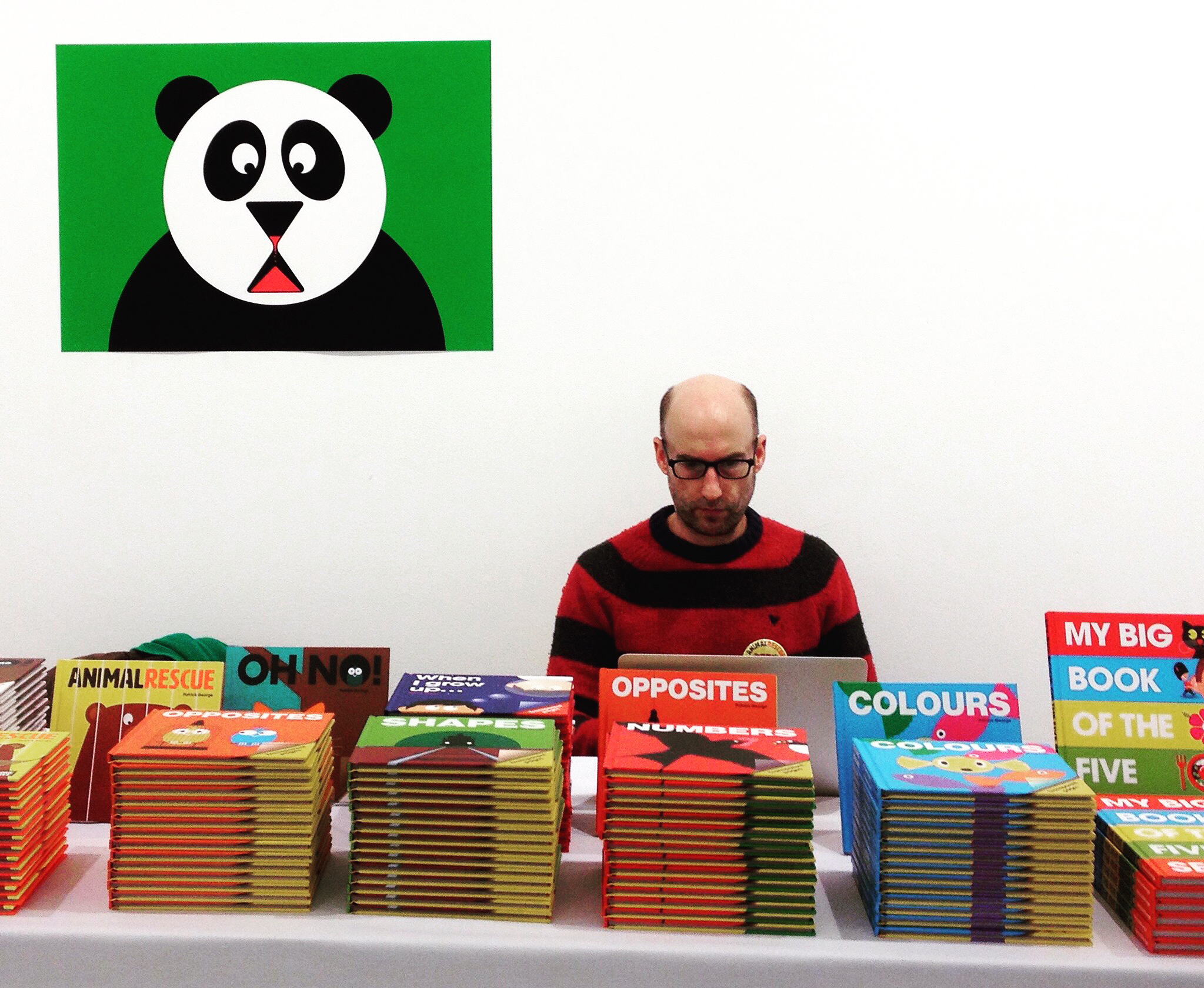
Patrick George's acetate books are works of art that children love—and for autistic kids, who often get more out of a multi-sensory experience, they are a kind of nirvana. His books feature transparencies that reveal surprises as you flip the pages. The graphic art is bold, colorful, and appealing, and the visual trickery is endlessly joyful and fun to share with others.
If you aren't familiar with his books, take a minute to watch this video that features his bestselling book, Animal Rescue.
'Animal Rescue' from PatrickGeorge on Vimeo.
Regular readers may recall that I reviewed and recommended Magic Colors as well as Magic Numbers earlier this year. My autistic 5-year-old twins just love these books, as well as a third in the series, Magic Opposites. I knew I had to interview Patrick to find out more about the ideas behind his super-sensory, magical creations.
When I made his acquaintance over email, I discovered that he has a partner in crime: his wife Ann Scott, who is also his publisher. Talking to them both, I learned so much about the philosophy and passion they bring to creating these unique literary experiences for young children. Visit their interactive website (www.patrickgeorge.com) to learn more about their titles.
MAMA BIBLIOSOPH: I know you two are married, but how did this amazing business partnership come about—and who does what?
Patrick George: I trained as an illustrator back in the late 80s, early 90s. I was really a wildlife illustrator. My stuff was very literal, very photographic. It was more about the technique.
I left college and joined a graphic design company, but Photoshop killed off what I did, so I retrained. I stayed at the same company for 19 years. I worked with some amazing designers who were all about visual literacy and playing with the “smile in the mind” idea, where you have to take a second look at something, and often it isn’t immediate, but you get that reward once you figure it out. I have always found that really intriguing.
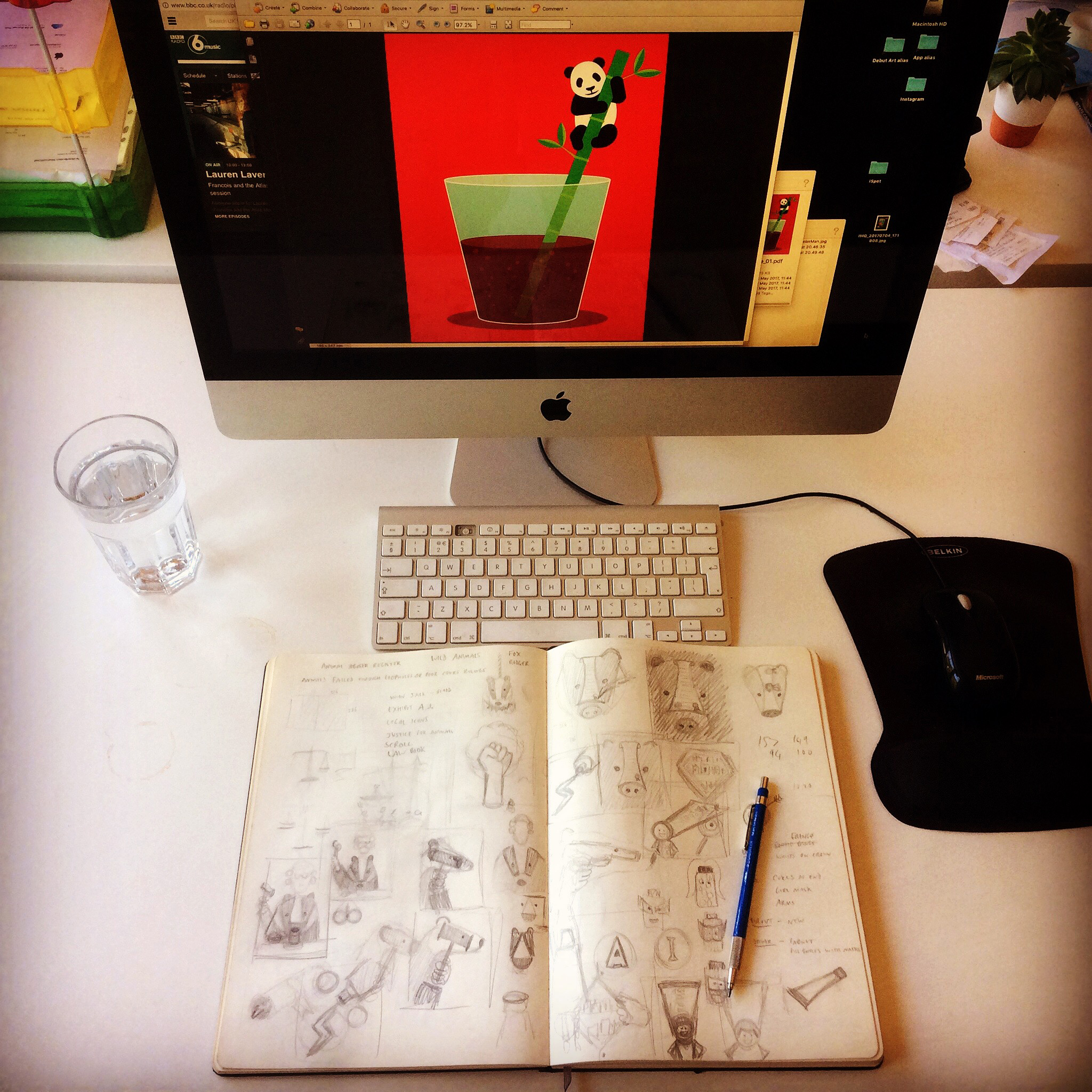
Ann, the kids and I moved out of London, and I wanted something to do from home. So I moved back into illustration but brought what I’d learned from graphic design back into it. The kids were quite young then, and they were always bringing back picture books from school or the library, and I found those quite literal in their interpretations of the imagery, so I thought it would be interesting to see how kids reacted to something more visually challenging.
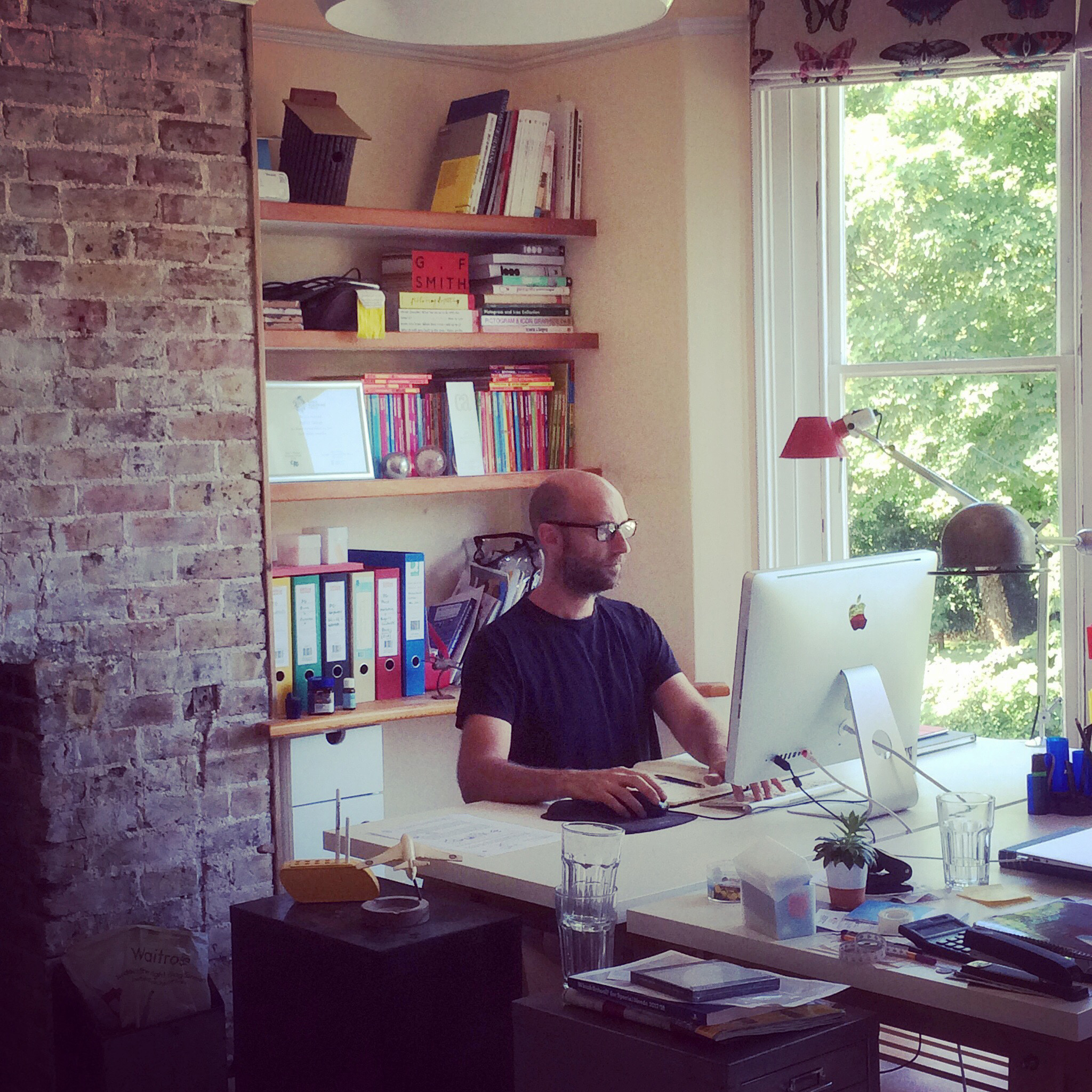
So that’s how I developed my style. Even though there are loads of books on colors or shapes or what-have-you, I wanted to do something different with those traditional themes. That was the starting point for the acetate series. What’s quite interesting for me is that in developing something more visually challenging, it seems to have a quite an impact on kids like yours who are more...
Visual?
Patrick: Yeah, exactly.
It’s funny, you say, “challenging.” For my kids the books aren't challenging in the way I think you mean. My sons are sensory seekers, and books with more sensory elements are easier for them to read. For one of my sons his sensory needs are more tactile, and the acetate’s feel and movement is appealing; for his twin, the input he’s seeking is more visual, and he's drawn to the “smile in the mind,” as you put it. But they are both drawn in.
So Ann, are you the writer?
Ann Scott: Yes. There aren’t many words in the books, but I write whatever text is needed. When Patrick had the idea to create the books, I was at a point where I’d stopped working. We had the young kids at home, and I was looking for a challenge. So I said, well I’d really like to publish the books. I’ve kind of learned it on the go. Now we have 18 titles in total and a lot of them have been translated into up to 20 languages, depending on the title. So I’ve been on this most amazing journey.
One of the things that’s been fascinating is meeting educators who work with kids who are learning English, or who specialize in special needs or learning difficulties, and finding out that our books seem to work particularly well and why that is. We were very honored to have Oh No! and Opposites selected for inclusion in book packs by a UK charity called the Book Trust, which supports children’s access to books and promotes reading. They give away millions of books each year to schools and other programs for kids.
The fact that they have been well received by kids who have autism or profound learning difficulties is so amazing. We didn’t set out with that in mind, but we have learned a lot, and it’s very interesting.
I’d love to ask you both about the physicality of the books. Sometimes when you open a picture book, even a hardcover one, the pages are flimsy. Your pages are nice and thick and the acetate ones are almost indestructible. The size is also nice; it's a scale that kids can easily hold. For me it’s funny, you say you didn’t know a lot about special needs, but it’s almost like you sat down and said, 'How can we design a book for kids with fine motor issues?'
Ann: Well that’s really nice to hear. In terms of production, the acetate was a problem in the beginning. We wanted something that was transparent, and we went for varying degrees of thickness, and also tried to find the right price point. And we did a lot of testing to make sure they didn’t tear. That took quite a lot of time to get right.
Patrick: With the paper, we needed something to counterbalance the thickness of the acetate paper for that tactile element. And as for size, I wanted something slightly more landscape, instead of the portrait A4 standard.
Ann: Like you say, it’s a durable and child-friendly format. They feel chunky, they feel sturdy, and they are very eye-catching. The color is incredibly important to us, too. We wanted those covers to jump at you off the shelf. We aren’t a very big publisher, so we needed that.
Well, that worked for me. I pulled them off of a shelf!
The acetate pages feel good to touch too, and they make an almost wind-like sound when you turn the pages. One of my sons stims with your books all the time—which I think is a pretty great endorsement.
Patrick: That’s one of the delights of books like this. You might not be able to put your finger on what you like about a book versus reading one on an iPad: the smell, the touch, the feeling of different papers, it makes a nice noise, the acetate sliding around on a page, and those little pops of surprises. The interest I try to create is that when you look at the transparent page against the paper background, you aren’t always clear what bit is going to move when you turn that page.
Ann: That’s the magic. It makes you want to do it again and again. That surprise is really important to us. And also minimal words are important because we really like the idea that kids can explore their own vocabulary and read with their parent or carer, and it’s a shared experience—it’s all about discovery.
I noticed in Oh No! that there are no words at all, correct?
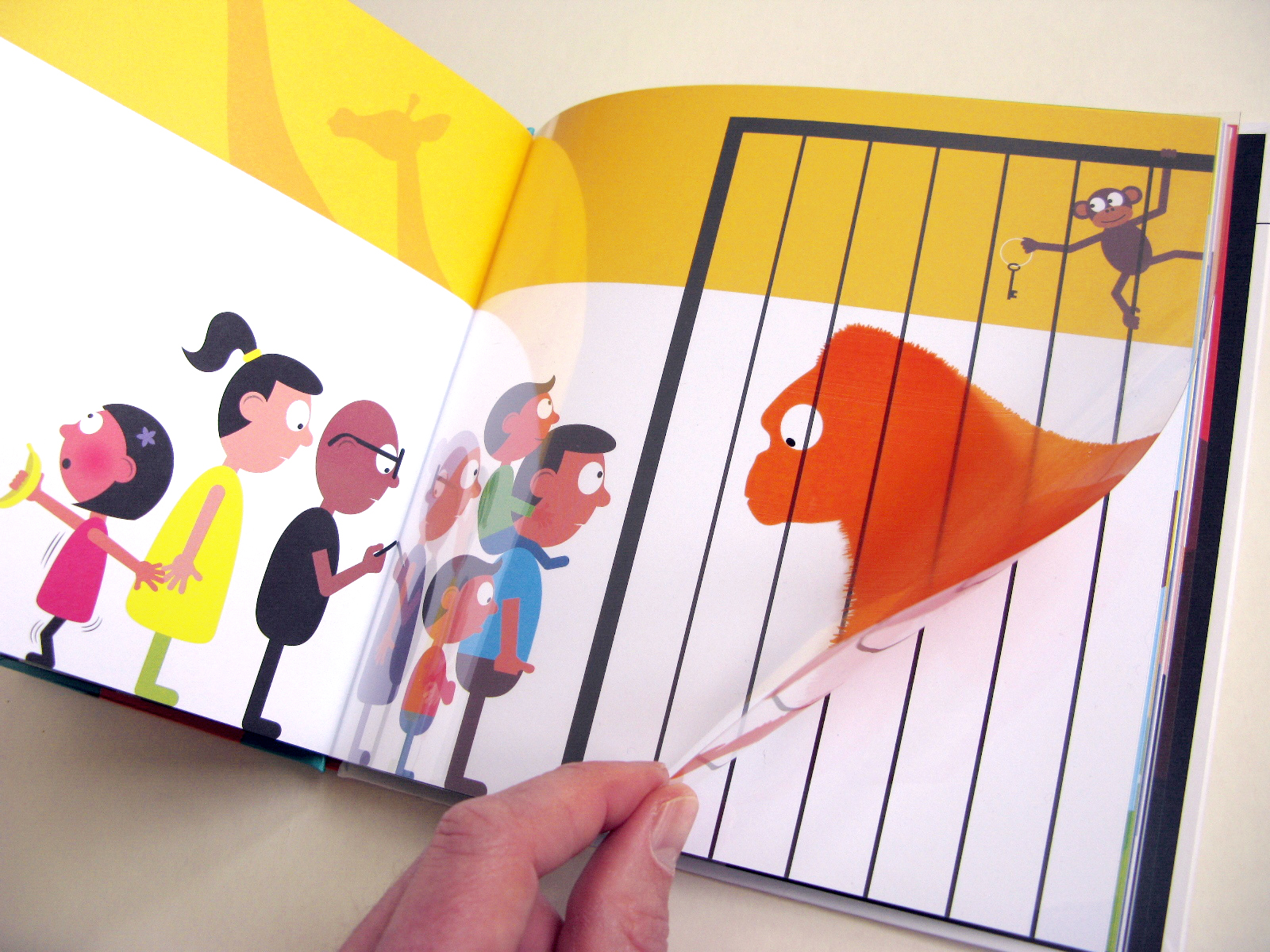
Ann: That’s right. It didn’t seem necessary. Every time I turned the page, I found myself saying, “Oh no!” so I thought, well, that’s it then!
I’ve had it first-hand from a teacher of children with multiple learning difficulties that she uses this book all the time with children who can’t speak yet. Because she says, if you think about it, the exclamation “Oh no!” can be used to mean "Oh no, I don’t feel well," or "Oh no, I’ve dropped something," or "Oh no, it’s raining outside." To her, it’s one of the most important first exclamations because it’s versatile, and it’s fairly easy to learn to say—so it’s very powerful. And this is of course something we never thought of when we were coming up with the book.
I would add to what that teacher said (which is all extremely true) that some kids with autism who can speak, may still have scripting, or what's sometimes called delayed echolalia. What I mean is that they may memorize books and the way they engage with them is to recite the thing from memory over and over and over again. Having a book with very little language—or better, no words at all—is particularly userful for those kids because it intrinsically encourages the reader to mix it up.
Ann: That’s really great!
I also love the dark humor of Oh No! My kids are into dark humor. We like things that don’t shy away from an owie, or things breaking, or an animal getting munched by another animal. I think it’s wonderful.
Patrick: Of all the books I’ve done, that’s the self-indulgent one I would have liked to have as a kid. It’s just a whole lot of silly accidents; it’s playful and fun. It’s not trying to do anything else but put a smile on your face.
I think my favorite is actually Magic Numbers. We’ve got these 10 doomed flies and—oh dear, one by one they’re just done away with. And then we have this beautiful, hopeful note at the end with the numeral for zero being revealed as an egg. My kids just love the whole book for the delight of wondering how the next fly going to bite it.
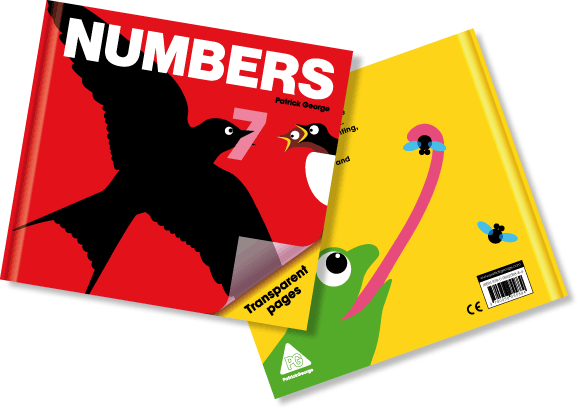
Ann: And it’s a very beautiful book. But it’s interesting you say that. It gets talked about the least of the acetate series. But I have a soft spot for it too. Plus you have the ability to talk about subtracting by one.
Absolutely!
I have a question about When I Grow Up. I love how part of the child’s aspiration turns into a piece of clothing or costuming that the child wears when you turn the page. Many kids with autism have a hard time with pretend play skills and they may come to dress up a bit late. And so I love that this sort demonstrates how it all works. I want to be a pirate, so maybe I put on an eye patch.
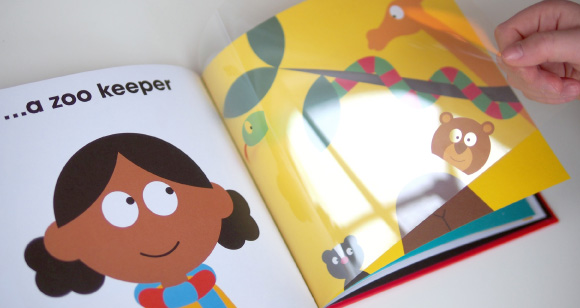
So tell me about that, but also—how did you pick the professions? Because you picked ones that are dreamy—more fantastical than what’s standard. You have a superhero, but not a doctor, you know?
Patrick: I wanted something that was more escapism and just treated it, as you mentioned, like a dressing-up box. The whole book is a visual metaphor for a dressing-up box.
Ann: We made a conscious decision when we were planning it to get away from the traditional professions you get in most children’s books. We wanted to play on the fact that children’s imaginations are so rich, and when you are young anything is possible. It’s so important that they want to be a superhero or a pirate or a clown and to give them a chance to express that freely.
Tell me about Animal Rescue. I see you have a companion app for the book. I did a post recently encouraging parents of reluctant readers to look for apps by children’s publishers and authors that are companions to excellent picture books. Was drawing in reluctant readers your intention with Animal Rescue?
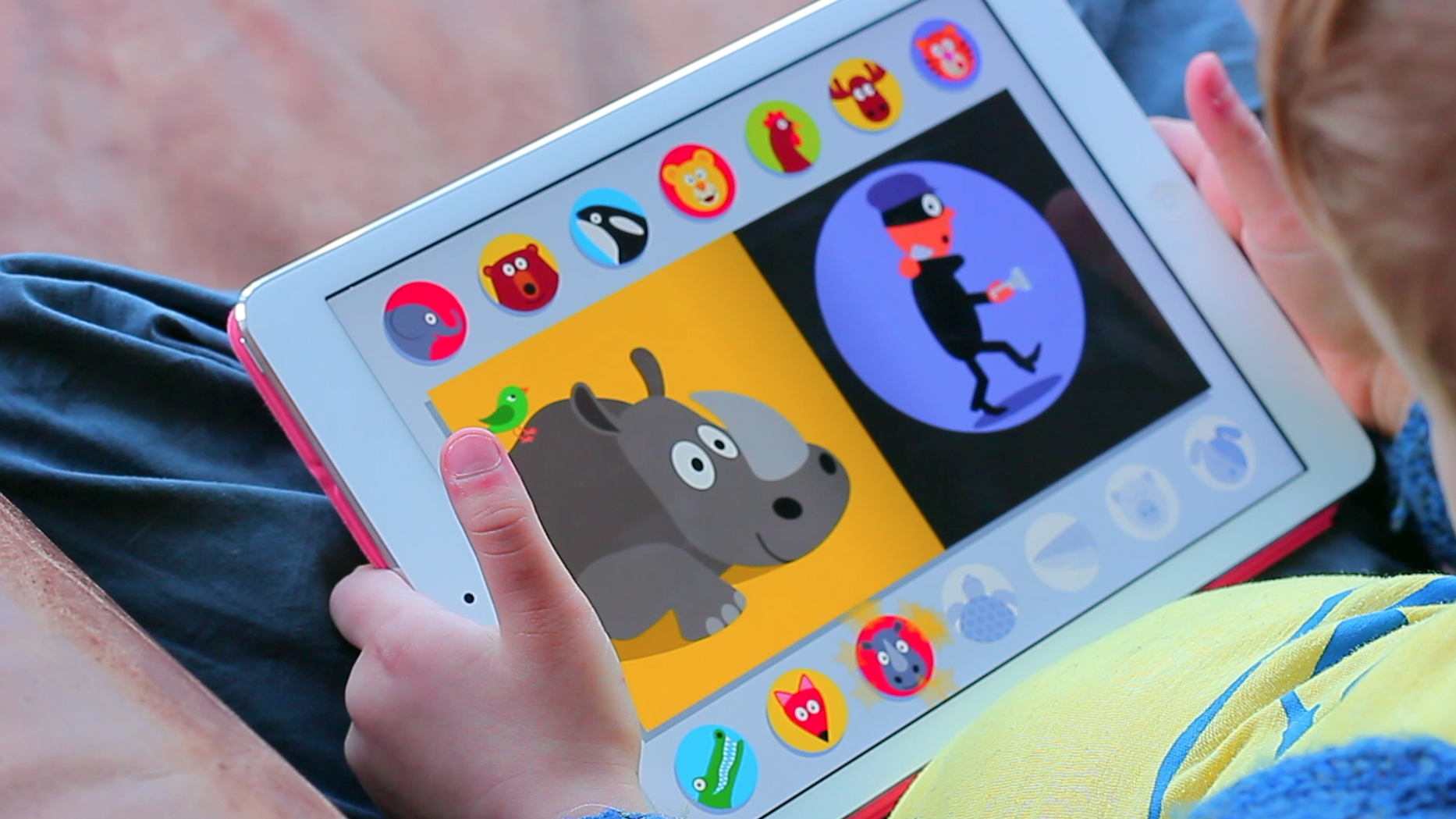
Ann: What happened was that Animal Rescue was such a popular book that we sold out of it, and there was this gap when we had to wait for the book to be restocked. So we thought we’d have a go at the world of apps.
We wanted it to read like a book, so there’s an animated transparency page, and that provides a connection between the book and the app. It also has other animations, real animal sounds, and a few additional spreads that couldn’t fit into the book. Does that answer your question?
Mostly. I guess I’m still wondering if you find that kids are coming to the book because of the app who maybe wouldn’t have come to the book on its own?
Patrick: Oh, I see.
When you have a child who has trouble paying attention to a book, but who loves their iPad, I have found that the familiarity and positive associations they gain from playing with a version of the book as an app can help them connect to the physical book later.
Ann: We’ve found that when we present both the book and the app to children that they will like both, but mostly they will go back to the physical book, which is interesting, isn’t it? It’s usually the opposite.
Patrick: I think the acetate sheets, once a child does play with them, provide that tactile element, and the ability to control the visual transformation. You can actually make the magic happen yourself.
That makes perfect sense! And that magic is definitely what has made your books so amazing for my sons. Thank you so much for chatting with me about them. I can’t wait for your next one.